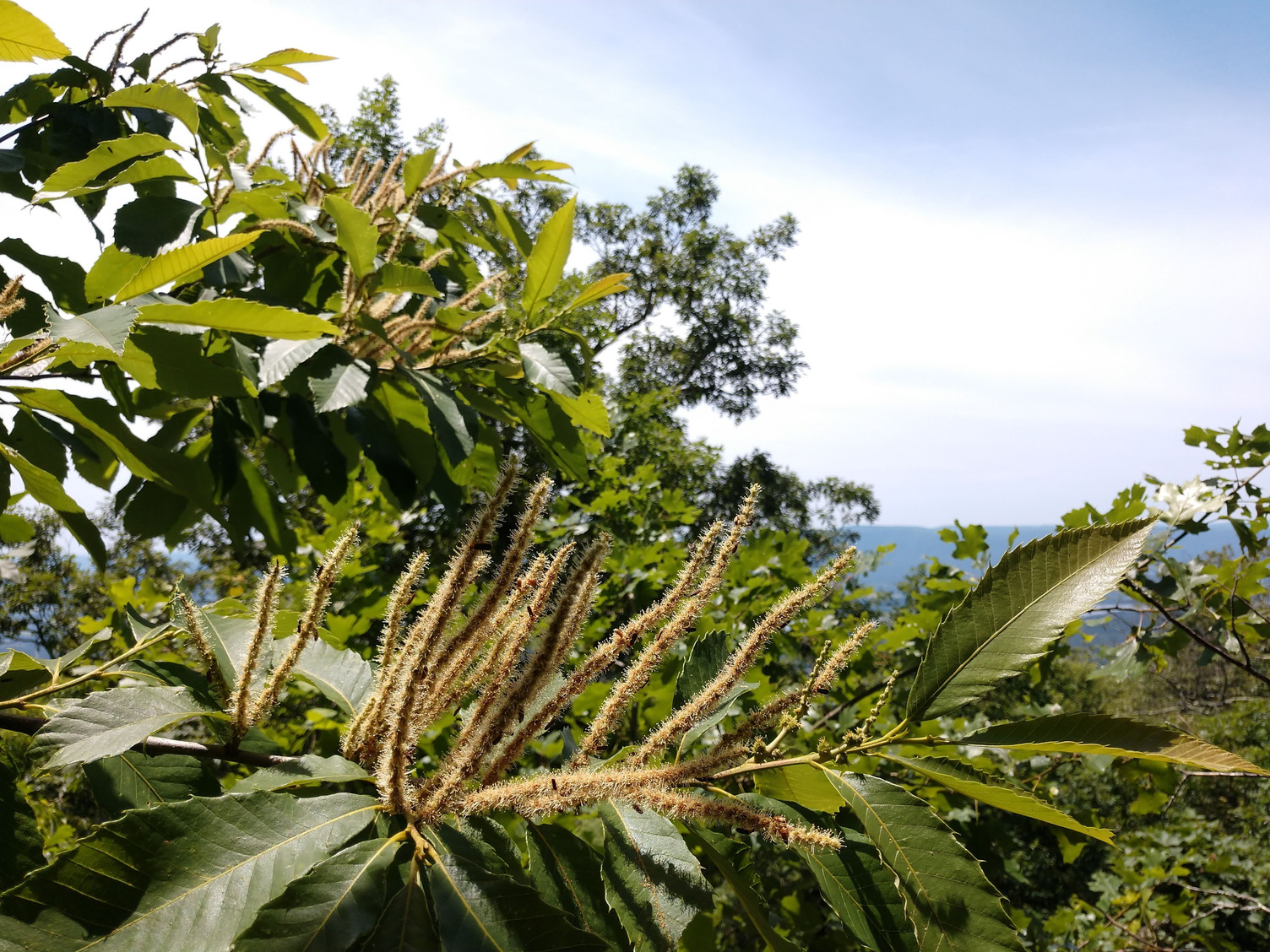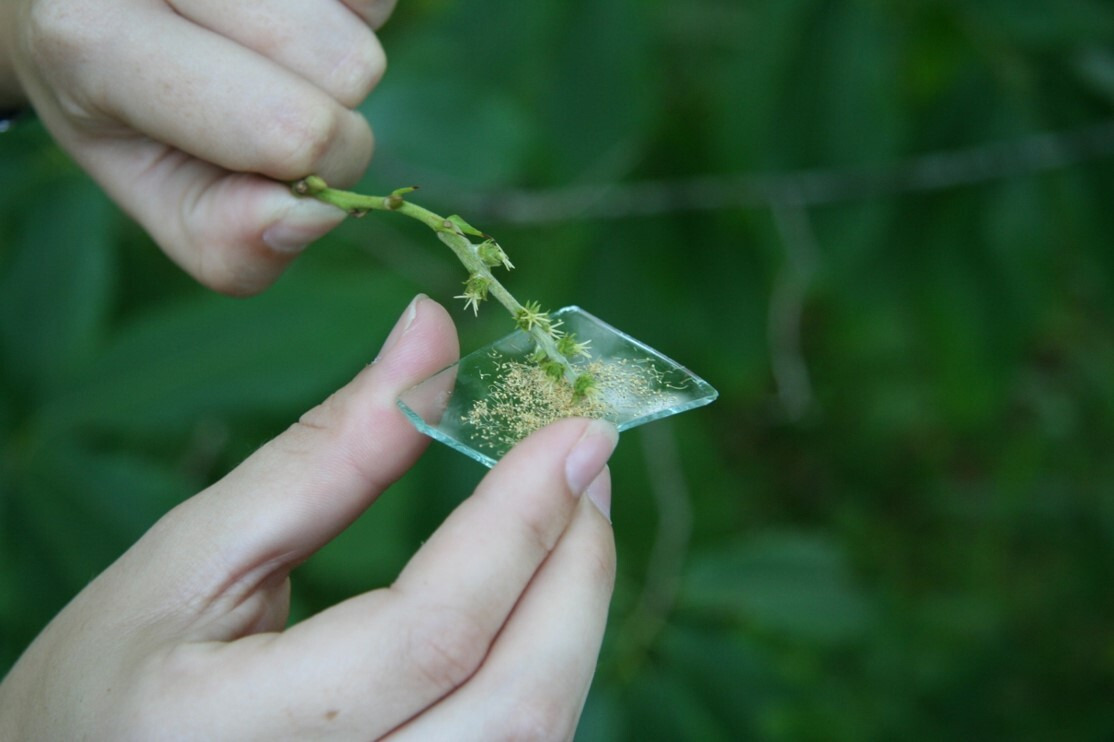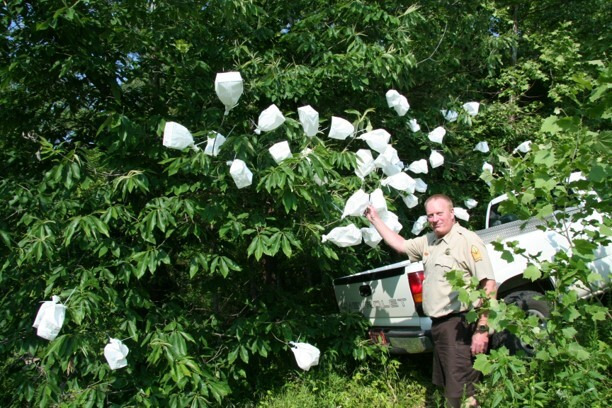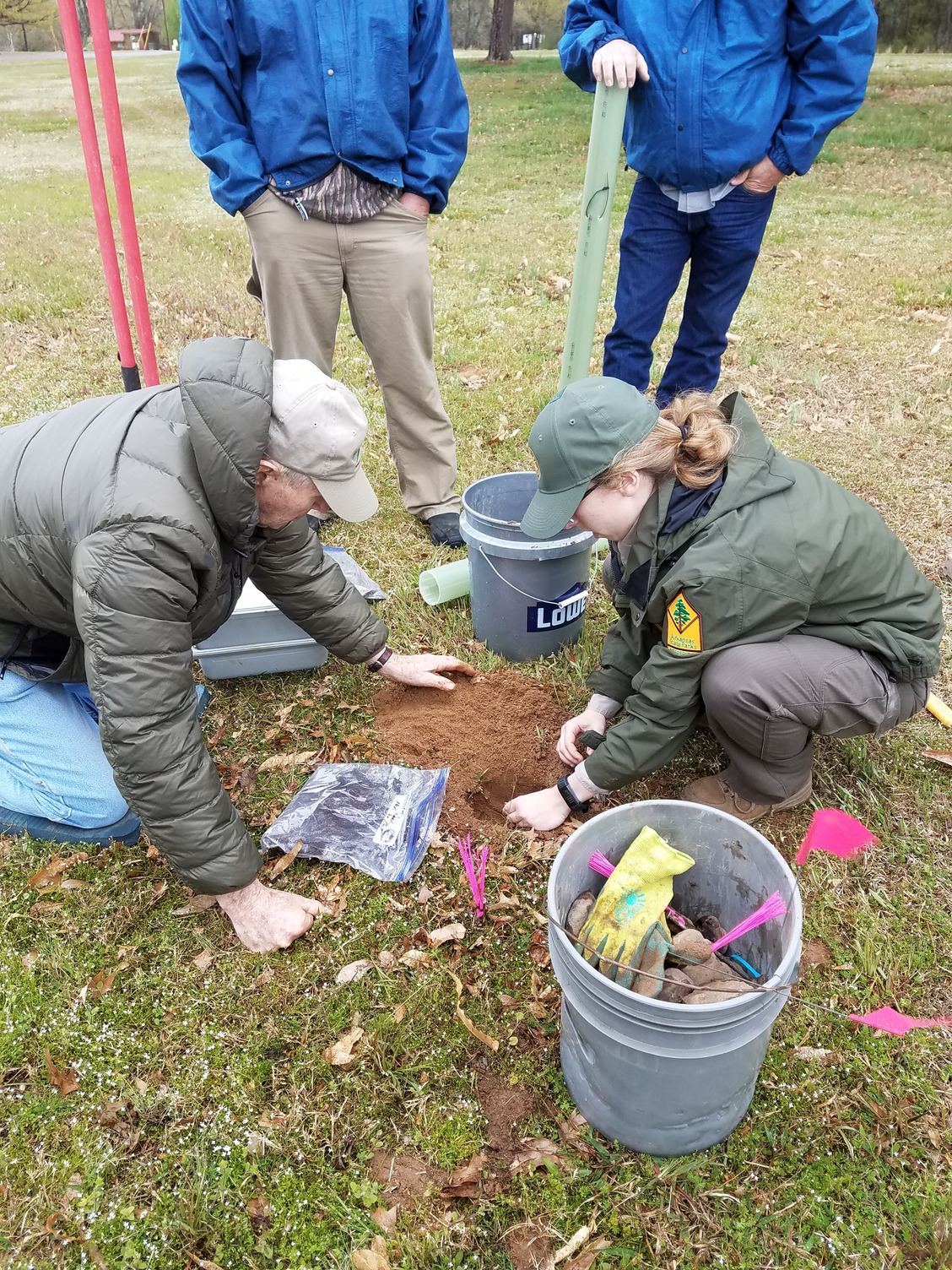The Ozark chinquapin once stood some 65-feet tall and two to three feet in diameter as a superfood tree in the Arkansas Ozarks and beyond. It covered the forest, feeding wildlife, Native Americans, and early settlers with its prolific nut crop. Today, however, mainly blighted stumps remain.
“This once widespread species of tree was thought to be forced to extinction by the chestnut blight,” Arkansas State Parks Regional Supervisor Tom Stolarz says.
The number of surviving stumps and the historic range of the tree continues to shrink as this important tree loses its battle against the debilitating fungus that hit it in the 1900s. But there is hope for the chinquapin. Arkansas State Parks staff with help from the Ozark Chinquapin Foundation are trying to save it from the chestnut blight through a new management plan.

Eleven state parks participated in an April training, provided by Steve Bost, founder of the Ozark Chinquapin Foundation, and his daughter Leslie.
“Their continuing research and fieldwork have helped isolate very blight-resistant seed stock, which will become the springboard to reintroducing this very important species back into the Arkansas, Missouri and Oklahoma forest ecosystems,” Stolarz explains.
The recent training from the foundation covered the basics of where and how to plant the Ozark chinquapin and how to care for it so that staff can go back to their respective parks and plant seeds.
“I think it’s amazing that the first training session has 21 percent of all Arkansas State Parks participating when they don’t have to,” Steve Chyrchel interpreter at Hobbs State Park-Conservation Area and Ozark Chinquapin Foundation board member, says. “It is not mandated because they didn’t want to put another burden on superintendents or interpreters, but everyone understood how important it is.” Stolarz says he looks forward to expanding the program within the state park system in coming years.

Successfully reintroducing the Ozark chinquapin to its native range is a many years’ process.
“We’re not planting trees. We’ve found that that doesn’t work. We’re planting nuts,” Chyrchel explains. The training includes the proper orientations and placement of the seeds. It has to be south-facing, well-drained soil. A four-foot grow tube supported by rebar with a mesh cap with rocks stacked around it protects the nut from animals. “If you don’t plant the seed properly you’re in trouble,” he adds. “The taproot must be planted the right way.”
Training also covers how to care for the growing seed. “Don’t overwater it because if they have wet feet they will die,” Chyrchel says. “It will have to be babied until it’s about five years old when the tree is old enough to take care of itself.” The staff also keeps track of seed sources, maintenance and other data collection to document the plantings for better success.
In addition to the training, the Ozark Chinquapin Foundation provides groups such as Hobbs State Park-Conservation Area with seeds that have ever-increasing blight-resistant genetics. Hobbs has established an Ozark Chinquapin Restoration Plot to produce seeds that are blight-resistant and can be planted anywhere in the original native range of the tree, and have that tree grow, reproduce seed, and survive.

“In Missouri and Arkansas we’re up to about 21 plots. These are restoration plots where we’re planting right where there’s blighted trees, restoring the Ozark chinquapin species back to our forest where it’s been missing from for about 80 years,” explains Steve Bost.
Re-establishing these trees to their native range will benefit wildlife, people, and the general ecosystems in which these trees grow.
“We have a lot less wildlife today because we don’t have the nutrition out there in the forest,” Chyrchel says.
The Ozark chinquapin was a reliable and super nutritious food source for forest animals. Compared to the white oak acorn, the Ozark chinquapin has 31 percent more carbohydrates, 230 percent more protein and 380 percent more fat, according to Chyrchel. Additionally it does not bloom until late May or early June when all chance of frost is gone. Seeds drop from September to the end of October.
“Right now, our number one food source in our woods is acorns,” explains Chyrchel. “Then think of all the critters who don’t eat the acorns but eat the critters that do eat the acorns. The bottom line is that if we have a late frost, for example, we have a bad acorn crop and there are fewer squirrels, chipmunks, fox, hawks, coyotes, etc. etc.” He adds that as more homes and condos are built there is also going to be less habitat.

“This tree produces nuts of unexcelled quantity and food value making it uniquely suited to upgrading the health of our forest ecosystems,” Stolarz says. “I don’t want to overblow it, but my closest analogy for restoring the chinquapin would be akin to bringing back the Whooping Crane or California Condor, only that the Ozark chinquapin will have a much bigger impact on the ecosystem.”
Plus, people enjoy chinquapin nuts too. “The chinquapin nut to me tastes like a macadamia nut. They’re absolutely delicious,” Chyrchel says.
The general public can get in on the mission to save this American legacy tree. The foundation makes seeds available and shares information for successful planting. If you are interested in joining the effort and obtaining seed, visit ozarkchinquapinmembership.org.
About Arkansas Tourism
Arkansas Tourism, a division of the Arkansas Department of Parks, Heritage and Tourism, strives to expand the economic impact of travel and tourism in the state and enhance the quality of life for all Arkansans. The division manages 14 Arkansas Welcome Centers and employs more than 60 staff members across The Natural State. For more information, visit www.arkansas.com.






